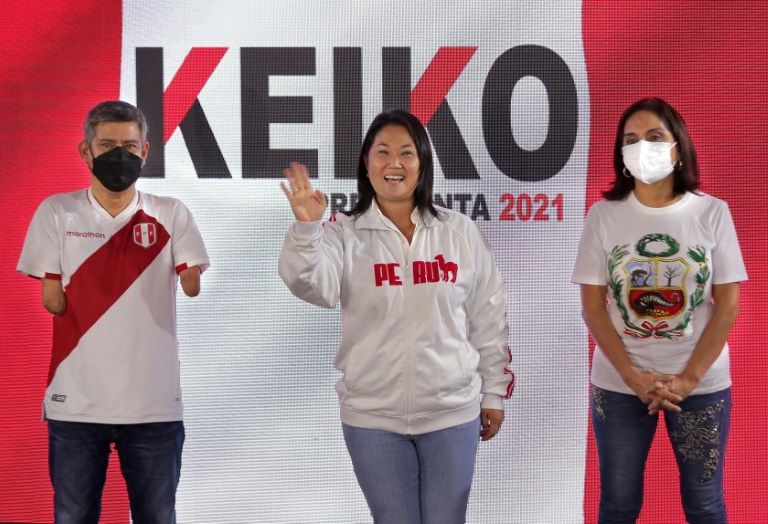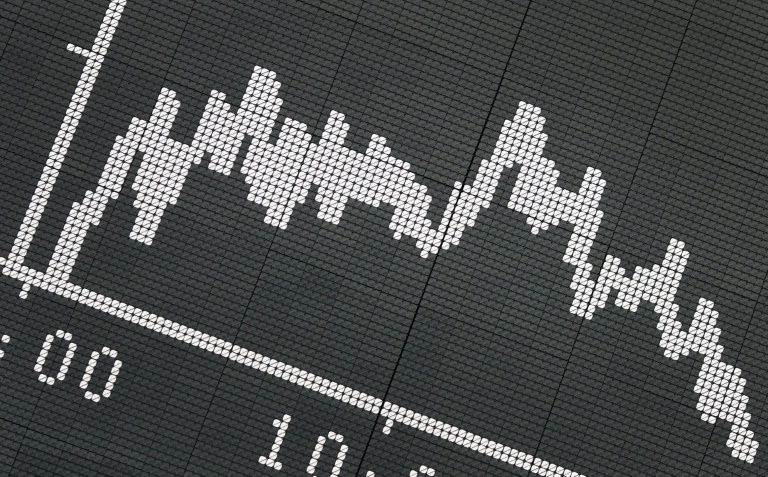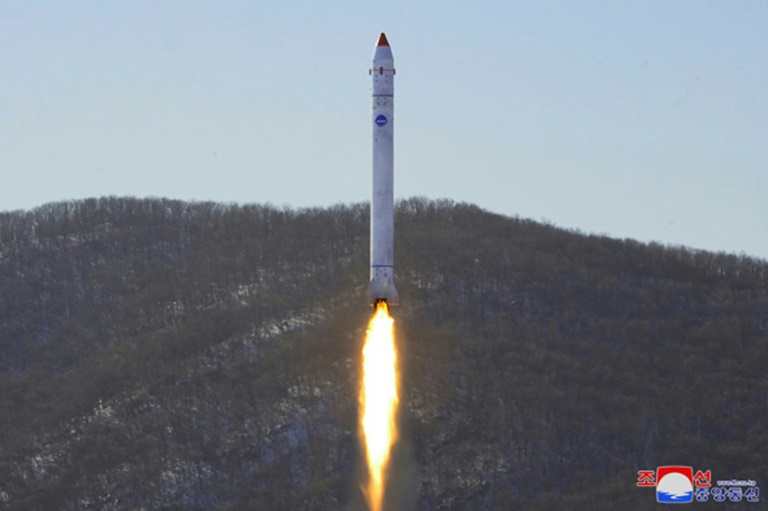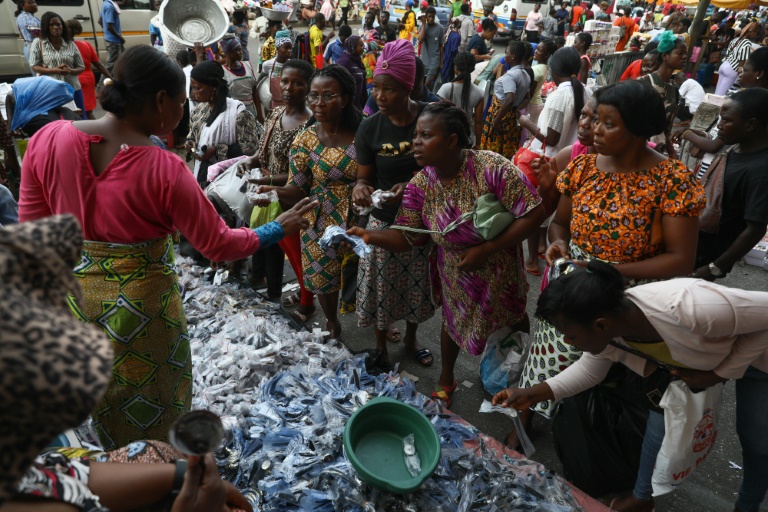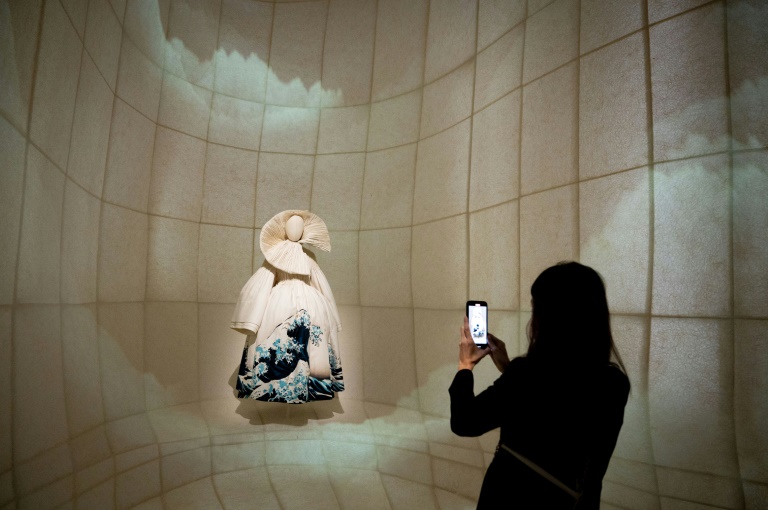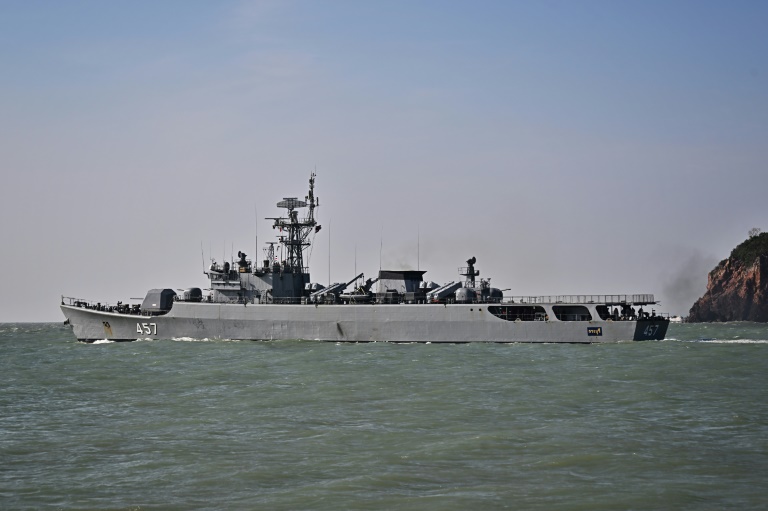Right-wing populist Keiko Fujimori held a narrow lead Monday in Peru’s presidential election, but the crisis-hit nation’s race was too close to call as votes were still being tabulated from countryside bastions of support for radical leftist Pedro Castillo.
Fujimori had 50.27 percent of ballots to Castillo’s 49.7 percent, according to partial results from Peru’s electoral body, with about 90 percent of polling stations counted after voting Sunday in a country battered by years of political turbulence.
Whoever wins will take leadership of a nation in crisis, suffering from recession and with the worst coronavirus fatality rate in the world after recording more than 184,000 deaths among its 33 million population.
Peruvians will also look to the winner to end years of political turmoil after four presidents in the last three years, and with seven of the last 10 of the country’s leaders either having been convicted of or investigated for corruption.
The head of Peru’s top electoral body (ONPE), Piero Corvetto, warned that many polling stations from rural areas — Castillo’s stronghold — had yet to be tallied.
“They haven’t counted our votes yet,” Castillo told supporters Sunday in Tacabamba, in the northern Cajamarca region where he lives.
Castillo, 51, had earlier urged his supporters to “stay calm.”
Fujimori, 46, also called for caution, saying: “Seeing how small the gap is, it is essential to maintain prudence and I say that for all Peruvians.”
Both candidates promised to respect the results as they cast their own ballots Sunday.
– ‘Too tight’ –
“We’re not going to know (the winner) until the last vote” is counted, political scientist Jessica Smith told AFP.
“It’s still very unsure — the difference is too tight and we have to wait for the official result.”
Castillo had topped the first round of voting in April, when the pair both caused a surprise by reaching the second round, and he was also narrowly ahead in the latest opinion polls before the vote.
At the height of the political storm in November last year, Peru had three different presidents in just five days.
Two million Peruvians have lost their jobs during the pandemic and nearly a third of the country now live in poverty, according to official figures.
For voters, this was a choice between polar opposites.
Fujimori represents the neoliberal economic model of tax cuts and boosting private activity to generate jobs.
Fujimori’s bastion is the capital Lima, while Castillo’s bulwark is the rural deep interior.
Trade unionist schoolteacher Castillo has pledged to nationalize vital industries, raise taxes, eliminate tax exemptions and increase state regulation.
Favored by the business sector and middle classes, Fujimori tried to portray Castillo as a communist threat, warning that Peru would become a new Venezuela or North Korea should he win.
Castillo pointed to the Fujimori family’s history of corruption scandals.
Keiko Fujimori is under investigation over campaign funding in her 2011 and 2016 presidential bids and has already spent 16 months in pre-trial detention.
Her father, a former president, is serving a 25-year sentence for crimes against humanity and corruption.
– ‘It won’t be easy’ –
“If Keiko is eventually elected, you can’t forget that this 50 percent is not her real support but rather a reaction from an electorate that is afraid of what her opponent represents,” Smith told AFP.
Whoever wins will have a hard time governing as Congress is fragmented.
Castillo’s Free Peru is the largest single party, just ahead of Fujimori’s Popular Force, but without a majority.
“It won’t be easy (for Fujimori) given the mistrust her name and that of her family generates in many sectors. She’ll have to quickly calm the markets and generate ways to reactivate them,” added Smith.
If Castillo triumphs, he’ll have to “consolidate a parliamentary majority that will allow him to deliver his ambitious program.”
But in either case, “it will take time to calm the waters because there’s fierce polarization and an atmosphere of social conflict,” analyst Luis Pasaraindico told AFP.
Some 160,000 police and soldiers were deployed to guarantee peace on election day as 25 million people were due to vote, plus another one million from the Peruvian diaspora living in 75 countries around the world.
The new president will take office on July 28, replacing centrist interim leader Francisco Sagasti.

